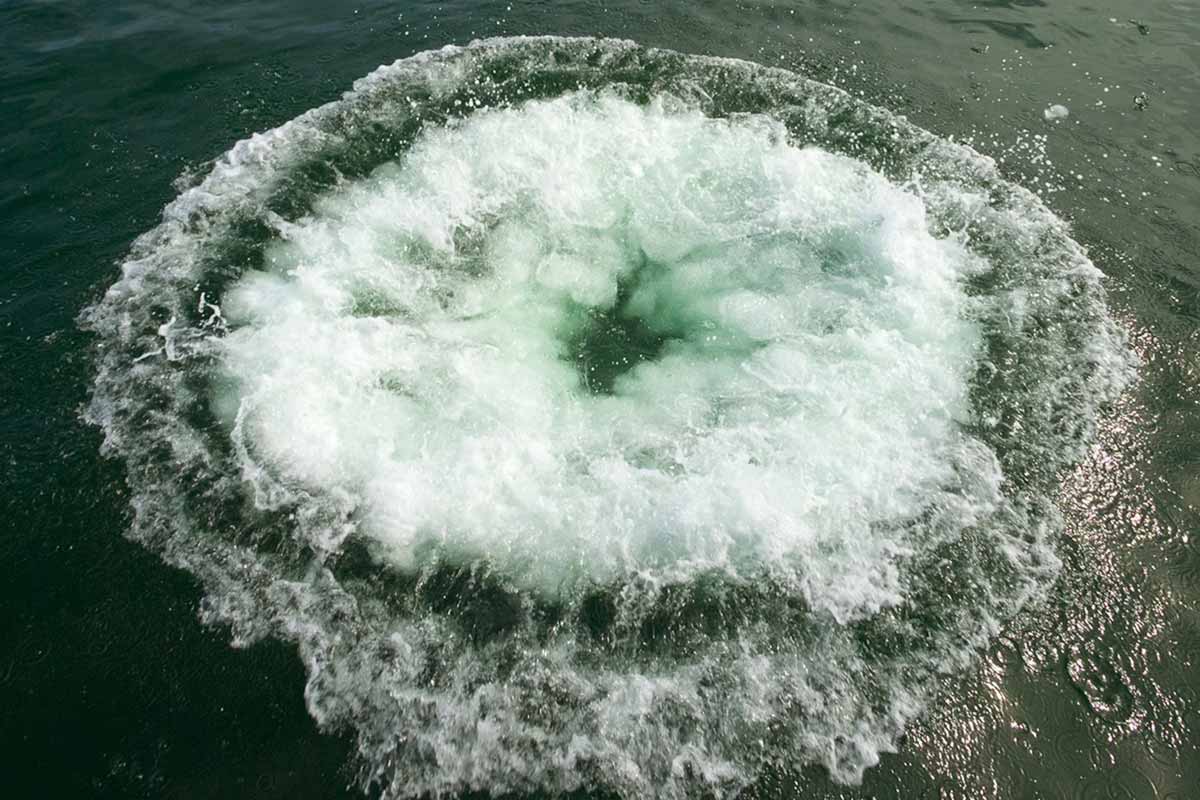The race to decode minds beyond our own may start much closer than we thought. Signals rise from the sea, subtle yet precise, and they nudge science to listen differently. Researchers track patterns, weigh intentions, and test ideas with care. Because non-human communication could already be unfolding around us, the ocean becomes a proving ground for intelligence—and a mirror that changes how we look up.
A clear phenomenon emerges beneath the waves
Marine researchers reported a striking behavior in humpback whales: perfect bubble rings formed during calm, voluntary approaches to boats and swimmers. The observation appears repeatedly, with nearly forty instances recorded. The team behind the work, WhaleSETI, unites scientists from the SETI Institute and the University of California, Davis, to study interspecies signals with rigorous field methods.
The findings appeared in Marine Mammal Science on May 15, 2025. The dates matter because they show a sustained pattern rather than an isolated episode. Senior scientist Dr. Laurance Doyle emphasizes that these encounters happen outside feeding or mating contexts. The behavior, therefore, looks intentional. It reads as social, focused, and oriented toward nearby human observers.
These ring-shaped bubbles differ from chaotic feeding structures. They are precise, symmetric, and repeatable. The whales create them in situations that do not involve prey. Researchers propose that these moments could express interest, invitation, or attention. If such cues carry meaning, then non-human communication may already have a foothold we can measure and test.
How the rings differ from bubble-net feeding
Bubble-net feeding is a tool, and it looks like one: sprawling curtains of bubbles that trap schools of fish. Communication rings look different. They form as distinct, elegant loops near observers, often at the surface, where the display can be seen clearly. The contrast suggests purpose beyond hunting.
This difference lines up with known signs of intelligence. Humpbacks coordinate tactics, vary their vocal repertoire, and adapt to context. They even show flexible tool use with bubbles. Across species, cognition can surprise us; cuttlefish have passed tests designed for children. Such results expand the frame for studying meaning, signals, and response.
The research, therefore, treats behavior as data. It compares shapes, contexts, and outcomes. It links displays to proximity and attention cues. And, it also sets falsifiable hypotheses about intent. Because the best path to non-human communication blends ethology with pattern analysis, the ocean turns into a living laboratory for signal science.
Field evidence of deliberate non-human communication with observers
Witness testimony matters when it is careful and consistent. Wildlife photographer Jodi Frediani documented whales that kept steady patterns near people while showing clear focus on observers. The behavior repeated enough to be persuasive. It did not look random. It matched the study’s structured logs.
Earlier work in Alaska adds a fascinating piece. A known female, nicknamed Twain, responded to researchers who played recorded whale calls. The team received similar vocalizations in reply. Reciprocal signals do not prove language. Yet they strengthen the case for interactive intent and attention toward humans.
The sea is not a side story to space. While NASA lands instruments on Mars and maps striking formations on the Moon, new intelligence clues surface at home. These encounters, cautiously read, point to tests we can repeat. They also hint that non-human communication might be observable, measurable, and ethically approachable in real time.
From ocean signals to the Drake Equation’s Fi
The WhaleSETI team argues for a broader SETI toolkit. Studying interspecies communication on Earth can inform the Drake Equation’s Fi: the share of life-bearing worlds where intelligence emerges. If we can recognize intelligence here, then we can refine criteria for detecting it elsewhere and reduce guesswork in the search.
Traditional SETI often scans radio bands and watches the sky. Programs highlight iconic observatories like the Hubble Space Telescope and parse chaotic light near black holes while radio arrays sweep the spectrum. Ocean work complements this by training algorithms and observers on real, interpretable signals produced by non-human minds.
Fred Sharpe, a UC Davis affiliate and co-lead author, notes key humpback traits: bubble tools, rich vocal diversity, strong cooperation, and documented help for other marine species under threat. Those capacities align with communicative intelligence in comparative terms. When framed this way, non-human communication becomes a testable bridge from oceans to cosmos.
Why recognizing non-human communication reshapes search strategies
Method matters. Researchers log context, distance, and sequence; they archive audio; they map ring geometry. Then analysts hunt patterns, validate repeatability, and probe for turn-taking or contingent response. The process feels slow, although it is how science protects itself from wishful thinking and error.
Computation matters too. Teams build models that spot structure within noise. They apply pattern recognition to acoustic signatures and visual traces. Quantum processors may accelerate that work as datasets grow. If models learn ocean signals well, they might generalize to novel extraterrestrial patterns and cut false positives in sky surveys.
The stakes reach beyond discovery. Understanding cognition could reveal conditions that keep intelligent species safe. The deep ocean holds creatures we barely know, and trenches hold surprises we have not met. Because whales have been observed helping other species, we learn social risk and protection together.
Why these rings may redefine how we listen for minds
The story does not end with whales or with space. It unfolds through careful observation, shared protocols, and open data. Because displays repeat and contexts are clear, researchers can test ideas without hype. If non-human communication is real and measurable, then our search for minds grows humbler, broader, and far more precise.
